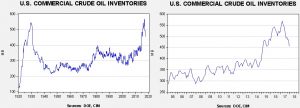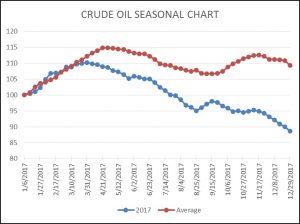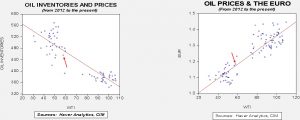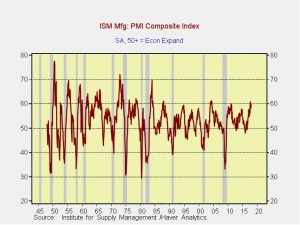by Bill O’Grady and Thomas Wash
[Posted: 9:30 AM EST]
The problem with bonds: Bond yields jumped yesterday with the 10-year T-note yield breaching 2.55%, breaking 2.50% for the first time since March. There appear to be two catalysts behind the jump. First, the BOJ reduced its purchases of bonds; it should be remembered that the Japanese central bank is adjusting its balance sheet to maintain a zero yield on JGBs. If the demand from the private market rises for this bond, the central bank will buy less. Thus, this adjustment probably doesn’t mean all that much. If private demand falls in the future, BOJ buying will increase. The second issue is more material. Yesterday, we noted the growing Fed chorus calling for different policy constructs. Currently, the FOMC uses the Phillip’s Curve as its primary economic construct, which postulates there is an inverse relationship between the unemployment rate and inflation. Thus, policymakers focus on the unemployment rate and the Fed tends to lean toward rate hikes as it declines. The problem the Fed has faced is that inflation has failed to decline despite the slide in the unemployment rate. A number of FOMC members are now suggesting that the Fed consider other constructs, including targeting nominal GDP or the price level instead of the rate of change. If such a shift is made, the mostly likely outcome would be that the Powell Fed will be tolerant of higher inflation rates. A key reason for low long-duration Treasury yields is low inflation expectations. These low expectations are partly due to beliefs that the FOMC will not tolerate higher price levels. If that has changed, the yield curve will certainly steepen. It remains to be seen whether this paradigm shift occurs. The Fed doesn’t make these shifts all that often. When Paul Volcker moved from targeting fed funds to bank reserves on Oct. 6, 1979, it was referred to as the “Saturday night massacre.” Later, in the 1980s, the Fed returned to interest rate targeting after seeing inflation decline. Although a number of FOMC members are calling for consideration of a new paradigm, an actual change is less likely. If we hear statements in the near future from Powell or others indicating the policy construct hasn’t changed, we will be watching to see if long-duration rates decline.
Vice Chair comments: According to reports, President Trump is close to naming a vice chair nominee. Richard Clarida is no longer said to be considered, with Larry Lindsey and Mohammad el-Erian as the remaining candidates. The latter name is better known and would receive a warmer reception from the media, but Lindsey is more hawkish and could be being pushed by Cohn/Mnuchin.
Korea talks: Yesterday, North and South Korea held formal talks. As expected, South Korea received some assurances that North Korea would not disrupt the Winter Olympics. As we mentioned yesterday, North Korea also agreed to send a delegation to participate in the Winter Olympics next month in Pyeongchang, South Korea. However, South Korea, at the urging of Japan and the U.S., brought up the nuclear issue with North Korean negotiators. The latter suggested this was a breach of protocol. Essentially, North Korea isn’t going to negotiate away its nuclear deterrent and there isn’t much the South can do about that fact.
Return of the earmarks: Yesterday, President Trump suggested bringing back earmarks in order to break up the gridlock in Washington. Earmarks allow reluctant statesmen to receive extra funding for special projects in exchange for their support on legislation. The practice is widely unpopular among constituents as it is commonly associated with mismanagement of public funds, such as Alaska’s “Bridge to Nowhere.” Banning earmarks was a part of the Republican platform that helped take back Congress in 2010; as a result, they immediately balked at the idea of restoring them. Although the president has received a lot of flak for the idea, if the Republicans lose their majority in the mid-terms, we would expect him to broach the topic again.











